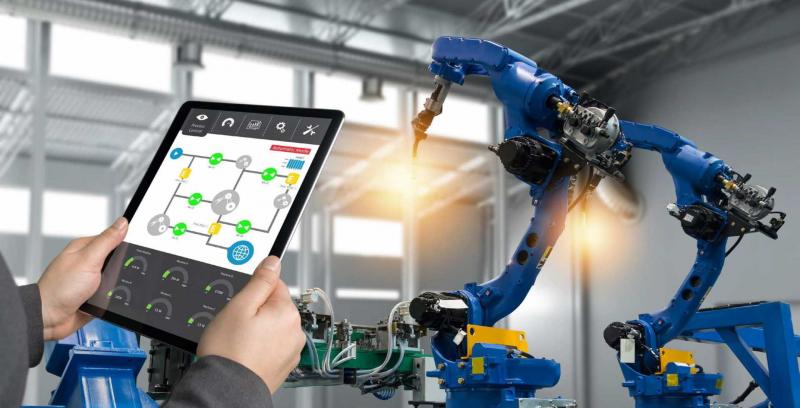The manufacturing industry is going through major changes with the adoption of Internet of Things (IoT) technologies. IoT leverages connected devices and sensors to automate processes, collect data, gain insights and make manufacturing smarter, efficient and optimized. Let's explore how IoT is impacting various aspects of manufacturing operations:
Intelligent Assembly Lines
IoT enabled sensors deployed on the assembly lines are collecting vast amounts of real-time data on production efficiency, equipment performance and product quality. This data is analyzed to detect anomalies and faults on the line. Predictive maintenance alerts are generated to perform maintenance tasks before equipment failures occur, minimizing downtime. The data also helps identify bottlenecks and optimize processes. Assembly lines can now self-adjust based on demand forecasts to maximize throughput. Robots collaborate seamlessly with humans for tasks like picking, packing and quality inspections.
Real-time Inventory Management
IoT tags attached to raw materials, work-in-progress and finished goods provide up-to-the minute visibility into inventory levels across shops floors and warehouses. RFID/NFC tags automate inventory counting eliminating manual errors. Low inventory alerts ensure just-in-time procurement. Products can be tracked from raw material stage till delivery to end customers, enabling traceability. Manufacturers now have end-to-end oversight of inventory improving turnaround times and minimizes stockouts and overstocks.
Predictive Quality Control
Iot In Manufacturing powered quality control tools continuously monitor product and process parameters to identify anomalies and enable predictive quality management. Sensor data helps detect defects early in the process before they become costly issues down the line. Condition monitoring tools detects machine vibrations and other signals to predict failures and maintenance needs, averting rejects. Traceability enabled by IoT allows identifying root causes of quality issues faster. Overall, IoT enables shifting quality efforts from inspection to prevention with its predictive capabilities.
Energy Monitoring & Conservation
Energy costs forms a major chunk of operating costs. IoT platforms integrates data from various production equipment and plants to analyze plantwide energy usage patterns. Inefficiencies in existing operations are uncovered along with recommendations for improvements. Monitoring tools identifies energy vampires draining substantial power with no visible outputs. Remote operations and condition-based maintenance reduces unnecessary operation of idle equipment saving energy. Overall equipment effectiveness (OEE) metrics factor in energy performance providing strong business case for conservation initiatives
predictive-analytics-manufacturing
Predictive analytics powered by IoT sensor data provides powerful insights into machines, products and processes. Unusual patterns predictive of failures, delays or defects are detected for pre-emptive actions. Predictive maintenance cuts maintenance costs and avoids unplanned downtime. Forecasting models helps optimize production schedules based on demand signals. Insights empower data-driven decisions for continuous improvements. Manufacturers can also leverage predictive capabilities to penetrate emerging opportunities in customized, on-demand manufacturing.
Remote Monitoring & Operations
IoT connected machines and infrastructure can now be monitored from remote command centers. Operations, performance metrics, alarms are viewed on centralized dashboards. Remote experts can access plant systems to troubleshoot issues without visiting locations, saving travel costs. Over-the-air software/firmware updates are enabled optimizing resource use. Operations can be started, stopped or adjusted remotely based on demand patterns. Remote monitoring improves transparency, while facilitating flexible, distributed operations to support global production and multi-site synchronization.
Augmented Workforce Safety
Sensors on workers seamlessly integrate humans into automated workflows. IoT accelerates job assistance through real-time work instructions and task guidance. Wearables monitor worker vitals for predictive fatigue and stress detection promoting well-being. Geofencing and proximity alarms protect workers from hazardous zones and moving vehicles. Real-time safety compliance and correct posture reinforcement reduces injuries. Automated dispatch of first responders to emergencies. Overall, IoT augments human capabilities while prioritizing their safety.
Blockchain Enabled Traceability and Compliance
Blockchain when paired with IoT, creates tamper-proof digital records of items, assets, materials in the supply chain. Complete visibility, authenticity and traceability of components from originator to end product is achieved resolving past conflicts. Documents like certifications, transaction records anchored on distributed ledgers simplifies compliance. Parts authentication eliminates counterfeiting. Smart contracts execute based on sensor data ensuring transparency. Secure digital identities establish trust between all entities in supply networks.
Get more insights on Iot In Manufacturing
Also read related article on Kidney Cancer Drugs Market
